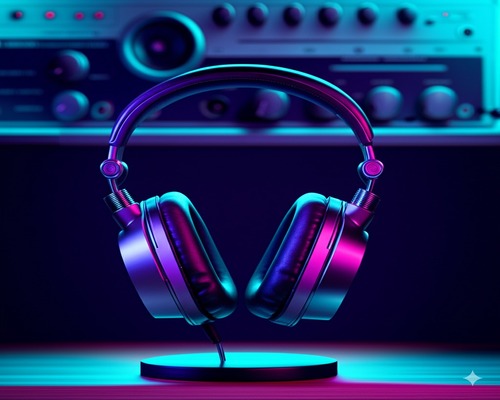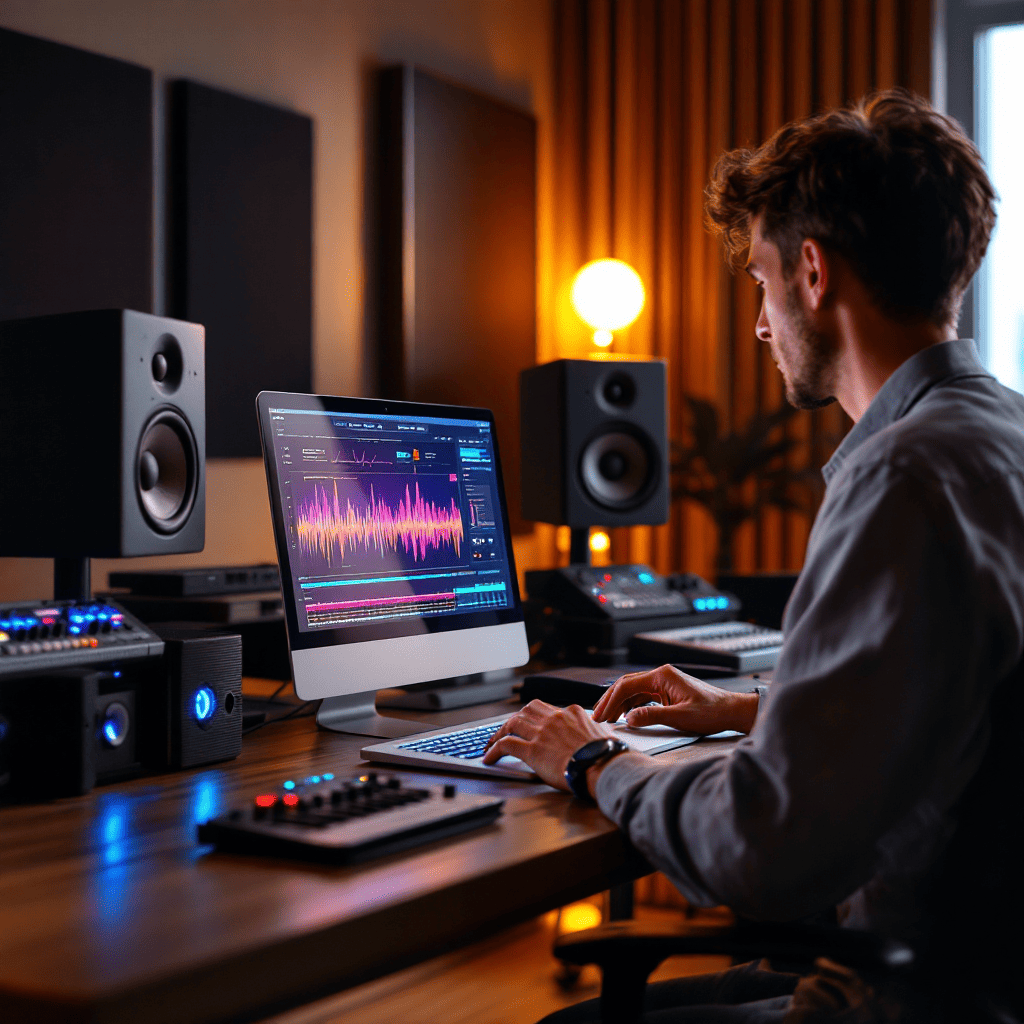
AI stem separation is basically a tech that pulls apart songs into their separate pieces – like removing vocals from the background music, or isolating just the drums or bass. It’s become a total game-changer for music production in 2025.
1.What Is AI Stem Separation and Why It’s a Game Changer
AI stem separation is exactly what it sounds like – technology that takes a finished song and breaks it down into its basic parts. Instead of hearing everything mixed together, you get separate files for vocals, drums, bass, and other instruments.
It works by using artificial intelligence to analyze sound patterns and separate what’s what in a recording. The AI has been trained on thousands of songs so it can tell the difference between a vocal track and a guitar, even when they’re playing at the same time.
In practical terms, it means you can take any song and pull out just the parts you want. Need just the vocals for a remix? Done. Want to sample that killer bass line? Easy. Looking to remove the lyrics for a karaoke version? No problem.
This tech has seriously changed how people work with music. Producers don’t need the original studio files anymore to remix a track. DJs can create mashups by mixing vocals from one song with instrumentals from another. Sample-based producers can grab just the drum break without all the other sounds getting in the way.
The best part is that it’s now super accessible. A few years ago, you needed serious tech skills and expensive software to do this stuff. Today, there are simple online tools where you just upload a song, click a button, and get your separated tracks. What used to take hours of careful audio engineering now happens in minutes.
For music creators, this opens up tons of possibilities that simply weren’t there before. It’s like getting access to the building blocks of your favorite songs, letting you use them in completely new ways.
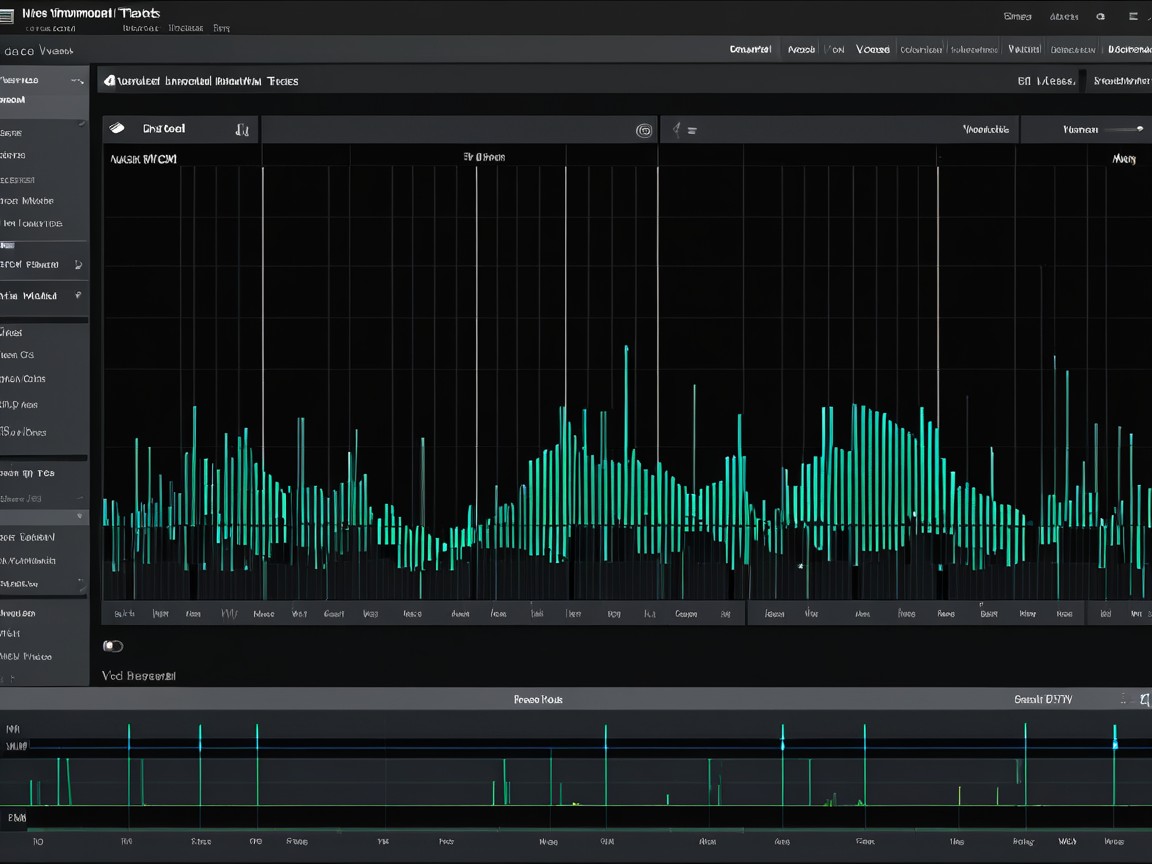
2. How Does AI Stem Separation Work?
So how does AI audio separation actually work? The magic happens through a combination of clever tech like neural networks, spectrogram analysis, and deep learning.
The Science Behind the Sound
So how does this audio separation magic actually happen? It’s pretty cool – when you feed a song into these AI tools, they first turn the sound into a picture called a spectrogram. Think of it like a heat map that shows which sounds are playing when and how loud they are.
The AI has spent hours “listening” to thousands of songs, learning what drum patterns typically look like in these spectrograms, how vocals appear differently from guitars, and so on. It’s basically become an expert at recognizing sound patterns.
Once it spots these patterns, it can pull apart the audio and rebuild just the parts you want. It’s kind of like how your brain can focus on just the person you’re talking to in a noisy restaurant.
What Are “Stems” Anyway?
If you’re not familiar with music production lingo, “stems” are just the individual parts of a song before they’re all mixed together. When artists record in studios, they typically capture each instrument separately – the drums on one track, vocals on another, bass on a third.
The neat trick with AI audio demixing is that it works backward – starting with the finished song and breaking it back down into those separate recordings. Before this tech came along, if you didn’t have the original recording files, you were stuck with whatever was released.
Common Stem Formats
Most stem extraction technology typically separates audio into 4-5 main components:
- Vocals: The singing or spoken parts
- Drums/percussion: All rhythmic elements
- Bass: Low-frequency instruments like bass guitar or synth bass
- Other instruments: Everything else (guitars, keyboards, horns, etc.)
Some more advanced audio source separation AI tools can break things down even further, separating guitar from piano, or kick drum from hi-hats.
3. Top Benefits of Using AI for Music Production
AI stem separation brings serious advantages to modern music production. Here’s why so many creators are jumping on this tech:
Speed and Precision for Remix Artists
Creating remixes used to mean hunting down official stem packs or acapellas, which were often hard to find. With AI audio separation tools, remix artists can start working with any track almost instantly. The technology extracts clean vocals and other elements quickly, letting artists focus on creativity rather than technical hurdles.
Creative Freedom for Mashups and Sampling
For producers who rely on sampling, AI tools are a dream come true. Need that perfect drum break or bassline? AI stem separation lets you pull out exactly what you need with minimal artifacts or unwanted sounds. This has opened up entirely new possibilities for using AI tools for remixing and creating fresh combinations of existing music.
Non-Destructive Workflows
One huge advantage of modern AI stem separation is that it’s completely non-destructive. You’re not permanently altering the original music – you’re just creating new assets to work with. This lets producers experiment freely without worrying about ruining their source material.
Accessibility for Beginner Producers
Perhaps the biggest impact of AI in music production is how it’s democratized advanced techniques. Beginners who don’t yet have the skills to manually isolate vocals using AI or separate instruments can now achieve professional-quality results with minimal technical knowledge. This has lowered the barrier to entry for music production as a whole.
4. The Best Use Cases for AI Stem Separation
AI stem separation isn’t just a cool tech demo – it’s a practical tool with tons of real-world applications. Here are the top ways people are using this technology:
🔁 Remixing & Mashup Creation
AI remixing tools have revolutionized how DJs and producers create new versions of songs. By extracting clean vocals or instrumental elements, artists can blend tracks that would’ve been impossible to mix before. Platforms like Moises and Lalal.ai make it simple to pull out specific parts and rearrange them into new compositions.
This approach to AI mashup creation has exploded in popularity as the quality of separations has improved. Even when working with fully mastered tracks, producers can now create professional-sounding remixes that stand up against official releases.
🎧 Sampling for Beats and Instrumentals
Producers looking for unique sounds are using AI music sampling to extract specific elements from recordings. Whether it’s a crisp drum break, a funky bass line, or a melodic phrase, separating audio for practice helps beat-makers find and isolate the perfect sample.
This has been particularly valuable in hip-hop and electronic music, where producers can now sample from practically any source with unprecedented precision. No more settling for samples with unwanted background sounds – AI stem separation delivers clean, usable elements.
🎤 Vocal Isolation for Covers or Karaoke
Want to create a cover song? AI vocal isolation technology makes it easy to remove the original singer from a track while keeping the instrumental background intact. This gives cover artists high-quality backing tracks to work with.
On the flip side, isolating vocals for karaoke lets you create custom karaoke tracks from any song. Karaoke enthusiasts and vocal coaches alike are using these tools to practice with their favorite music, even for songs that never had official karaoke versions.
🎬 Film/Game Sound Design and Background Scores
Sound designers for visual media are finding AI stem separation incredibly useful for adapting existing music to fit specific scenes. By separating a track into its components, they can adjust levels to match the mood or emphasize certain elements as needed.
This application is particularly valuable when working with licensed music that wasn’t specifically composed for the project. Sound designers can make subtle adjustments without commissioning completely new music.
📚 Educational Purposes and Instrument Practice
Music students and teachers are using AI stem separation as a learning tool. By isolating specific instruments, students can practice playing along with just the parts they need. Want to learn the bass line from a complicated song? Extract just the bass and study it in isolation.
This educational use of separating instruments from music creates customized practice tracks that help musicians develop their skills more effectively. It’s like having access to the sheet music for any song, but in audio form.
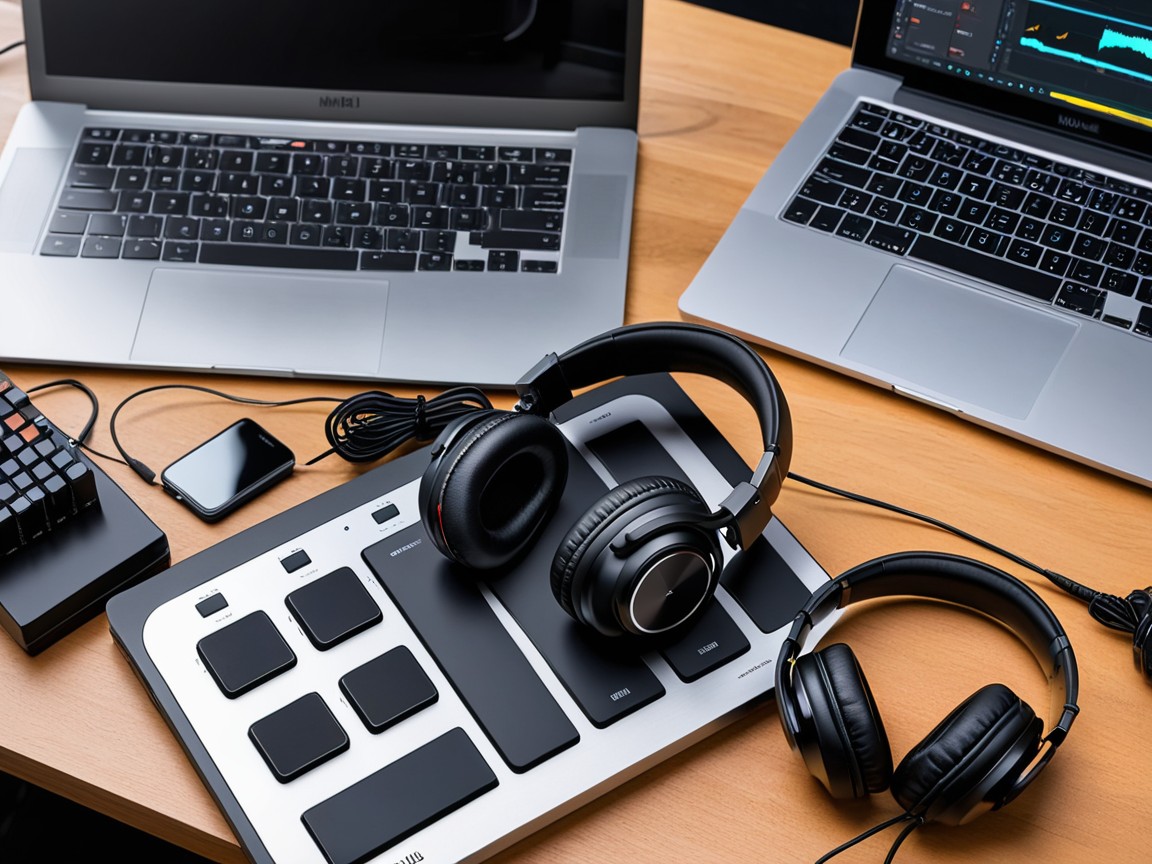
5. Top AI Tools for Stem Separation (2025)
The field of AI stem separation has exploded with options, from free open-source projects to premium services with advanced features. Here’s a quick look at some of the leading platforms:
Popular AI Stem Separation Platforms
There are now dozens of AI vocal isolation platforms available, but a few stand out from the crowd:
- Lalal.ai: Known for exceptional vocal separation quality
- Spleeter: An open-source option popular with developers
- Moises: Great for musicians with instrument-specific features
- Splitter.ai: User-friendly interface with quick processing
- PhonicMind: Excels at difficult separations with overlapping frequencies
- XTRAX Stems: Popular with DJs for its performance with electronic music
Each of these online music stem extractors has its strengths, and the best choice depends on your specific needs. Some prioritize ease of use, while others focus on separation quality or processing speed.
For a deeper dive into each platform, check out our full guide to Best AI Tools for Musicians and AI Music Production in 2025.
6. A Step-by-Step Guide to Using AI for Remixing and Sampling
Ready to try AI stem separation yourself? Here’s how to get started with remixing a song using AI:
Choosing the Right Tool
First, pick an AI stem separation tool that fits your needs:
- For beginners: Choose user-friendly web apps like Lalal.ai or Moises
- For pros: Consider subscription services with advanced options
- For technical users: Look at open-source options like Spleeter
Each platform has different pricing, quality levels, and output options. Many offer free trials so you can test before committing.
Uploading Your Track
The process is typically straightforward:
- Select or drag your audio file to the upload area
- Choose which stems you want to extract (vocals, drums, bass, etc.)
- Start the separation process
Most services process tracks within minutes, though processing time depends on the length of your song and the service’s computing resources.
Editing or Rearranging Stems
Once you have your separated stems, you can:
- Import them into your Digital Audio Workstation (DAW)
- Adjust levels, timing, and effects for each stem
- Combine stems from different songs
- Apply processing to specific elements without affecting others
This is where the creative possibilities of creating mashups with AI tools really open up. You might combine the vocals from one track with the instrumental from another, or layer multiple drum patterns for a more complex rhythm.
Exporting and Using in DAWs
After you’ve downloaded your stems, import them into your favorite DAW:
- FL Studio users can align stems on the playlist and adjust levels
- Ableton Live users might warp stems to match tempo
- Logic Pro users can organize stems into track stacks
When using stems in Ableton Live or other DAWs, treat them like any other audio file – you can apply effects, chop them up, time-stretch them, or process them however you like.
For more detailed guides on DAW-specific workflows, check out our AI in Electronic Dance Music and AI Music Mastering resources.
7. Legal & Ethical Considerations in AI Stem Separation
While AI stem separation is an amazing creative tool, it comes with some important legal and ethical questions to consider.
Copyright Implications of Isolating Vocals
Is it legal to isolate vocals from copyrighted songs? This is complicated. Creating stems for personal use or practice is generally fine, but publicly sharing isolated vocals or using them in commercial work without permission could violate copyright law.
The technology itself is legal, but how you use the separated stems matters. Think of it like recording a TV show – recording for personal viewing is usually fine, but broadcasting that recording to others isn’t.
Using Stems from Copyrighted Music: What’s Legal, What’s Not
Here’s a general breakdown of copyright and stem separation considerations:
Usually Acceptable:
- Creating stems for personal practice
- Using small, transformed samples as part of a new, original work
- Creating karaoke versions for private use
Legally Problematic:
- Selling stems from copyrighted music
- Releasing remixes without permission
- Using substantial portions of separated stems in commercial works
Remember that AI music ethics and fair use in music production involve gray areas, and laws vary by country. When in doubt, seek permission or consult with a legal professional.
Attribution, Licensing, and Sampling Ethics
The ethical approach to using AI stems for commercial use involves:
- Seeking proper licenses when using recognizable portions of songs
- Giving credit to original artists when appropriate
- Transforming samples sufficiently to create new, original work
- Understanding that just because you can isolate a stem doesn’t mean you own the rights to it
For more on navigating these complex issues, check out our guide on The Impact of AI in Music and AI in Hip Hop and Rap where sampling ethics are discussed in depth.
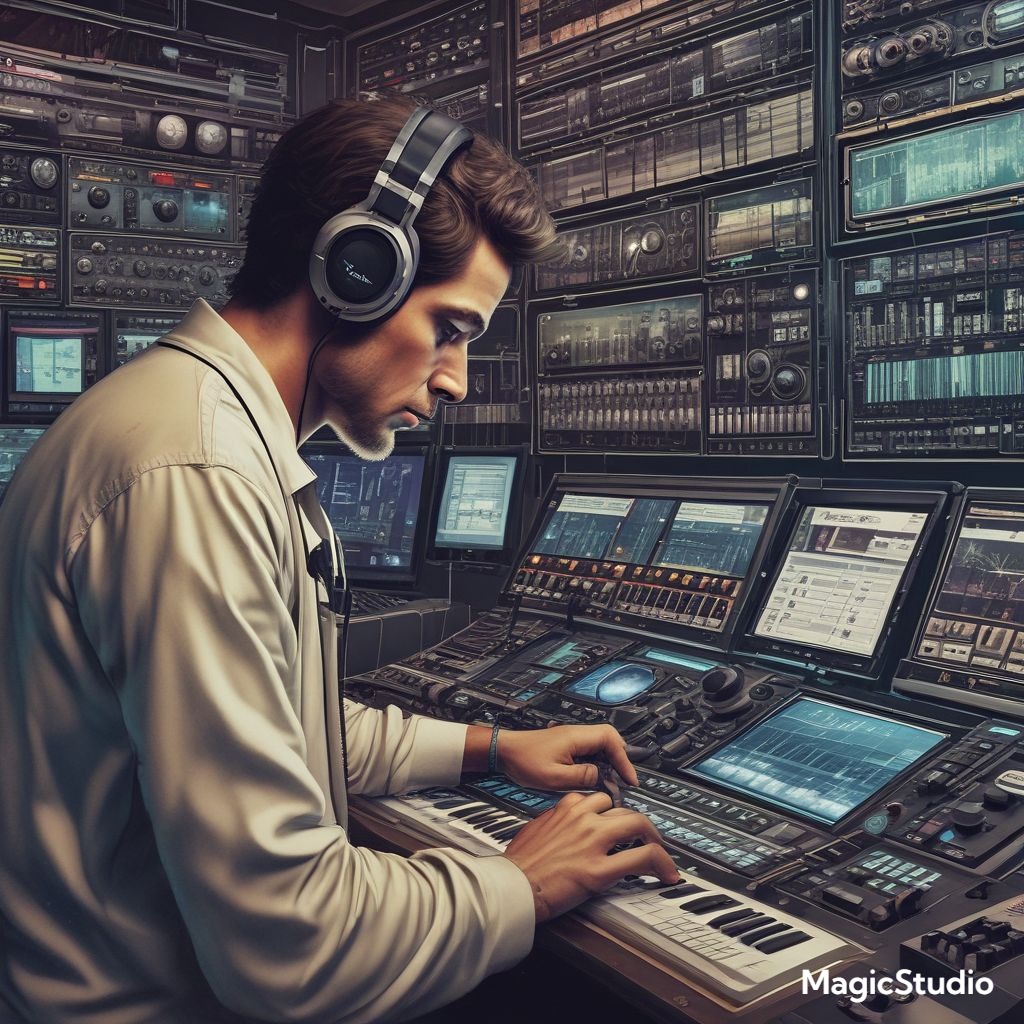
8. Conclusion: Is AI Stem Separation the Future of Music Production?
AI stem separation has fundamentally changed how creators approach music production. In just a few years, we’ve gone from crude separation attempts to near-studio-quality stems generated from mixed audio.
Summary of Capabilities
This technology gives producers unprecedented flexibility, allowing them to:
- Extract clean vocals and instruments from any track
- Create professional remixes without access to official stems
- Sample specific elements with precision
- Customize practice tracks for learning
- Adapt existing music for new contexts
The quality and accessibility of these tools continue to improve at a rapid pace, suggesting we’ve only scratched the surface of what’s possible.
Final Thoughts: Tool vs. Technique
While AI stem separation is incredibly powerful, it’s worth remembering that it’s just a tool – not a replacement for creativity or musical skill. The most interesting uses come from artists who combine this technology with their own unique vision and technical expertise.
The best producers don’t just rely on AI to do the work for them. They use it to open new creative doors, accessing sounds and combinations that would have been impossible before. The technology enables creativity rather than replacing it.
The Balance Between Creativity, Ethics, and Tech
As we move forward, the music community continues to navigate the balance between technological possibility and ethical responsibility. Is AI stem separation legal for all uses? Not necessarily. But when used responsibly, with respect for original creators and within appropriate legal boundaries, it represents a positive evolution in music production.
For those interested in how AI is changing music creation across genres, explore our resources on AI Music by Genre and AI in Pop Music.
9. FAQ — AI Stem Separation
Q1: Can I legally use AI to isolate vocals from any song?
You can legally isolate vocals from copyrighted songs for personal use, practice, or study. However, distributing those isolated vocals or using them commercially without permission likely violates copyright law. The legality depends on what you do with the stems after extraction, not the extraction itself.
Q2: What’s the best free AI stem separation software in 2025?
Among free AI stem separation tools, Spleeter stands out for developers and technical users, while services like Lalal.ai and Moises offer limited free tiers with high-quality results. The best free vocal remover depends on your needs – some excel at vocal isolation, while others offer better all-around stem separation.
Q3: Can I use AI stems in my commercial music?
Using AI stems for commercial use is complicated. Small, heavily processed samples might fall under fair use, but recognizable elements require proper licensing. Just because you can extract a stem doesn’t give you rights to the original composition or recording. For commercial projects, consider royalty-free samples or obtaining proper licenses.
Q4: How accurate is AI for separating instruments in complex tracks?
AI accuracy in stem separation has improved dramatically but still varies based on the complexity of the original mix. Clean, modern productions with distinct instrument separation work best. Dense orchestral pieces or lo-fi recordings pose more challenges. Instrument separation AI quality continues to improve with each generation of tools.
Q5: Can I remix popular songs using AI stem tools?
You can create remixes using AI stem tools for personal enjoyment or practice. However, publicly releasing remixes of copyrighted songs with AI typically requires permission from rights holders. Some artists and labels host remix competitions with official stems, providing a legal avenue for releasing remix work.
For more information on music production techniques and AI tools, check out our comprehensive guides on AI Music Production and AI Mixing Tools.
Further Reading & Industry Insights
The following sources provide up-to-date statistics and industry insights related to AI-powered stem separation. They offer additional context for those interested in the technology’s adoption, market impact, and creative applications:
AI-powered stem separation technology is now used by over 48 million users globally through platforms like Music.AI and SourceAudio, processing more than 2 million minutes of audio daily.
The global AI in music market is projected to grow from $3.9 billion in 2023 to $38.7 billion by 2033, with a compound annual growth rate (CAGR) of 25.8%.
https://www.digitalocean.com/resources/articles/ai-music-generators
Seamless integration of stem separation technology has enabled companies like Disney and Downtown to make their entire music catalogs more discoverable and flexible, accelerating global growth.

